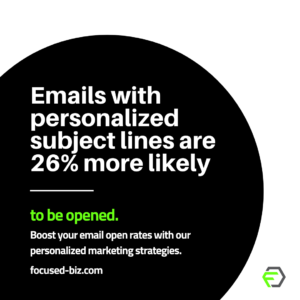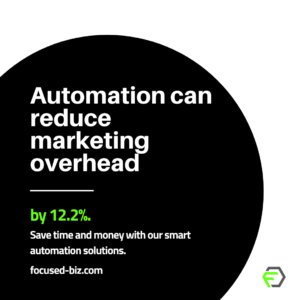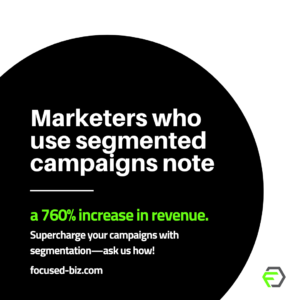Understanding the Basics of Marketing Automation
The Role of Marketing Automation in Personalization
Marketing automation is a powerful tool that allows businesses to streamline their marketing efforts and deliver personalized experiences to their customers at scale. It involves the use of software platforms to automate repetitive marketing tasks such as email marketing, social media management, lead nurturing, and more. By implementing our marketing automation guide, businesses can save time, increase efficiency, and ultimately drive better results.
How Marketing Automation Works
At its core, marketing automation relies on capturing and analyzing data about customer behavior, preferences, and interactions with a brand. This data is then used to create targeted marketing campaigns tailored to individual customers or segments. The automation software enables businesses to track customer activities, such as website visits, email opens, and clicks, and trigger specific actions or communications based on predefined rules.
For example, if a customer abandons their shopping cart on an e-commerce website, the automation system can automatically send them a personalized email reminder with a discount code to encourage the completion of their purchase. This level of personalization helps businesses nurture leads, increase conversion rates, and build long-term customer relationships.
The Benefits of Marketing Automation
Implementing marketing automation offers several key benefits for businesses seeking to achieve personalization at scale. Firstly, it allows for increased efficiency by automating repetitive manual tasks, freeing up marketers’ time to focus on strategy and creative efforts. This not only saves time and resources but also reduces the risk of human error.
Furthermore, marketing automation enables businesses to deliver personalized content and messages to their customers at the right time and through the right channel. By leveraging data and insights, marketers can create highly targeted campaigns that resonate with individual customers, increasing engagement and conversion rates.
Another major advantage of marketing automation is the ability to measure and track campaign effectiveness. The software provides comprehensive analytics and reporting capabilities, allowing marketers to monitor key performance indicators, track ROI, and make data-driven decisions to optimize their marketing efforts.
In summary, marketing automation is a powerful tool that empowers businesses to achieve personalization at scale. By automating repetitive tasks, leveraging data, and delivering personalized experiences, businesses can enhance customer engagement, drive conversions, and ultimately achieve better marketing results.

Implementing Personalization Strategies
1. Define your personalization goals
Before implementing any personalization strategies, it is important to clearly define your goals. What do you hope to achieve with personalization? Are you looking to increase customer engagement, drive conversions, or improve customer satisfaction? By having a clear understanding of your objectives, you can better align your personalization efforts and measure their effectiveness.
2. Collect and analyze customer data
To effectively personalize your marketing efforts, you need to have access to relevant customer data. This includes demographic information, browsing behavior, purchase history, and any other data points that can help you understand your customers’ preferences and needs. Implement tools and systems that allow you to collect and analyze this data in a structured and efficient manner.
3. Segment your audience
Once you have collected the necessary data, the next step is to segment your audience into distinct groups based on their characteristics and behaviors. By creating these segments, you can tailor your messages and offers to resonate with specific subsets of your audience. This allows for more personalized and targeted marketing campaigns that are more likely to generate positive results.
4. Develop personalized content and experiences
With your audience segments in place, you can now start developing personalized content and experiences. This can include customized emails, website experiences, product recommendations, and more. Use the data you have gathered to create personalized messages that are relevant and valuable to each segment of your audience. Consider leveraging automation tools to streamline the process and ensure consistency across different channels.
5. Test and refine your personalization efforts
Personalization is an ongoing process, and it is important to regularly test and refine your strategies. A/B testing can help you determine which personalization tactics are most effective and drive the desired results. Monitor key metrics and make data-driven decisions to optimize your personalization efforts over time. Continuously analyze customer feedback and adjust your approach as needed to ensure you are delivering a seamless and personalized experience.
6. Ensure privacy and data security
As you implement personalization strategies, it is crucial to prioritize privacy and data security. Make sure you are complying with relevant data protection regulations and implementing robust security measures to safeguard customer information. Be transparent with your customers about how their data is being used and give them control over their preferences. Building trust with your audience is essential for successful personalization.

Utilizing Data for Targeted Campaigns
Segmenting Your Audience
Segmenting your audience is a crucial step in utilizing data for targeted campaigns. By dividing your audience into smaller, more specific groups, you can tailor your marketing messages to their unique needs and preferences. There are various ways to segment your audience, such as demographics, behavior, location, or past interactions with your brand.
Start by analyzing your existing customer data to identify patterns and common characteristics among different groups. This will help you create meaningful segments that align with your business goals. Use tools like customer relationship management (CRM) software to organize and manage your segmented audience effectively.
Personalizing Content and Offers
Once you have segmented your audience, it’s time to personalize your content and offers based on the insights gained from your data analysis. Personalization goes beyond simply addressing your audience by their first name – it involves delivering relevant and timely messages to each segment.
Craft customized emails, website experiences, and advertisements that speak directly to the needs and interests of your segmented groups. Use dynamic content that adapts based on user behavior, such as recommending related products or showcasing tailored recommendations. Personalized content and offers increase engagement, conversion rates, and customer satisfaction.
A/B Testing and Optimization
To ensure the success of your targeted campaigns, it’s essential to continuously test and optimize your marketing efforts. A/B testing allows you to compare different versions of your content, offers, or campaign elements to determine which performs better.
Start by identifying the specific element you want to test, such as subject lines, call-to-action buttons, or landing page designs. Split your audience into two groups and expose each group to a different version. Analyze the results to determine which version generates higher engagement, conversions, or other desired outcomes.
Optimization involves making data-driven adjustments based on the results of your tests. Continuously refine and improve your campaigns to maximize their effectiveness. Remember that data can provide valuable insights, but it’s crucial to interpret and apply those insights effectively to achieve the best results.

Integrating Marketing Automation Tools
Choosing the Right Marketing Automation Tools
When it comes to integrating marketing automation tools, it is crucial to choose the right ones for your business needs. With a wide range of options available in the market, it’s important to consider factors such as your budget, desired features, scalability, and ease of use. Researching and comparing different tools can help you make an informed decision.
Implementing Integration Strategies
Once you have selected the appropriate marketing automation tools, it’s time to implement integration strategies to streamline your marketing efforts. Start by identifying the key areas where automation can add value, such as lead generation, email marketing, social media management, or customer relationship management (CRM). Map out the workflows and processes that need automation, and ensure that your chosen tools are compatible with your existing systems.
Integrating marketing automation tools requires collaboration between different teams, such as marketing, sales, and IT. It’s essential to ensure that everyone is on board and understands the objectives of the integration. Assign responsibilities and establish communication channels to keep all stakeholders informed throughout the process.
Data Integration and Analysis
To achieve personalization at scale, it’s crucial to integrate and analyze data from various sources. This includes customer data from your CRM, website analytics, social media platforms, and other channels. Marketing automation tools allow you to gather and consolidate this data in one place, providing you with a holistic view of your customers’ behaviors and preferences.
Ensure that your marketing automation tools offer robust data integration capabilities, allowing you to connect different systems seamlessly. This will enable you to create accurate customer profiles, segment your audience effectively, and deliver personalized messaging across multiple channels. Regularly analyze the data collected to gain insights, identify trends, and optimize your marketing campaigns for better results.

Measuring Success and Optimizing Strategies
Tracking and Analyzing Key Metrics
To measure the success of your marketing automation efforts and optimize your strategies, it is essential to track and analyze key metrics. These metrics provide valuable insights into the effectiveness of your campaigns, allowing you to make data-driven decisions and continuously improve your personalization efforts.
One important metric to monitor is conversion rate. This metric measures the percentage of visitors or leads that take a desired action, such as making a purchase or filling out a form. By tracking the conversion rate, you can evaluate the impact of your personalized content and determine if it is driving the desired outcomes.
Another crucial metric to consider is engagement rate. Engagement rate measures how actively your audience is interacting with your content. It can be determined by analyzing metrics such as click-through rates, time spent on page, and social media interactions. A high engagement rate indicates that your personalized content resonates with your audience, while a low engagement rate may signal the need for adjustments in your strategies.
Furthermore, tracking customer lifetime value (CLV) helps you understand the long-term profitability of your automated marketing efforts. CLV considers the revenue generated from a customer over their entire relationship with your brand. By calculating CLV, you can identify which segments of your customer base are the most valuable and allocate your resources accordingly.
A/B Testing and Experimentation
A/B testing is a powerful technique that enables marketers to compare two versions of a webpage, email, or other content to determine which one produces better results. By conducting A/B tests on different elements of your personalized campaigns, such as subject lines, call-to-action buttons, or content layouts, you can identify what resonates best with your audience and optimize your strategies accordingly.
When conducting A/B tests, it is important to test only one variable at a time to accurately determine its impact on the desired outcome. This allows you to isolate the specific element you are testing and make informed decisions based on the results.
Experimentation is a continuous process in marketing automation. By continually testing, iterating, and analyzing the results, you can uncover valuable insights, refine your personalization strategies, and stay ahead of the competition. Remember that what works today may not work tomorrow, so embracing a culture of experimentation is essential for long-term success.
Data Analysis and Audience Segmentation
Effective data analysis plays a crucial role in measuring the success of your marketing automation efforts. By diving deep into your data, you can gain valuable insights into your audience’s preferences, behaviors, and needs. This information allows you to segment your audience into smaller, more targeted groups and deliver personalized experiences that resonate with each segment.
Audience segmentation enables you to create highly relevant content tailored to the specific interests and preferences of different segments. By leveraging data such as demographics, purchase history, and engagement patterns, you can craft personalized messages that speak directly to the needs of each segment, driving higher engagement and conversion rates.
To effectively analyze data and segment your audience, it is important to leverage marketing automation tools that provide robust reporting and analytics capabilities. These tools can help you uncover patterns, identify trends, and make data-driven decisions to optimize your marketing automation strategies and achieve personalization at scale.

